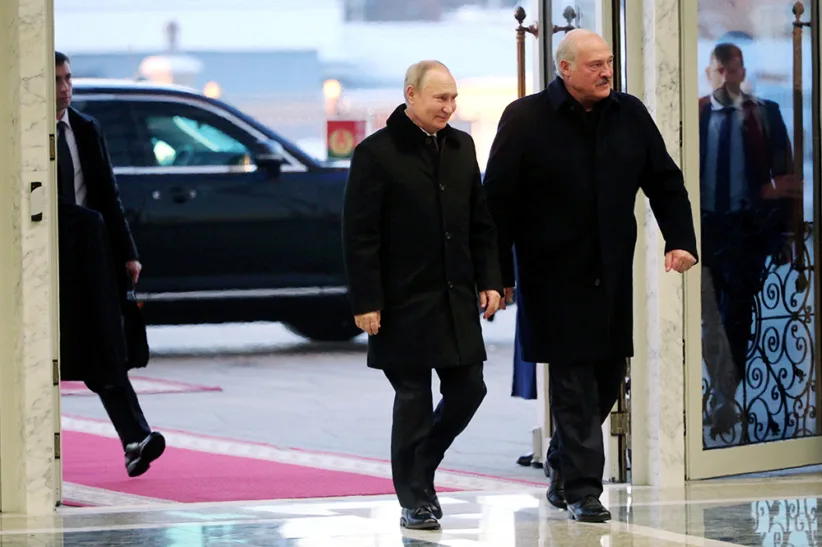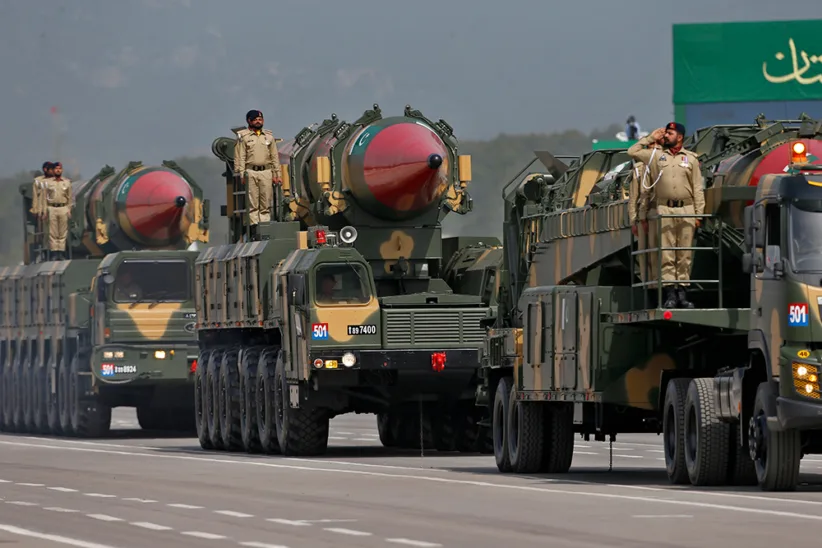NPA’s latest Nuclear Weapons Ban Monitor is out
The latest edition of Norwegian People’s Aid’s Nuclear Weapons Ban Monitor was launched on 29 March 2023. The report shows that as fear of nuclear war in 2022 surged to the highest levels since the Cold War, the global arsenal of nuclear weapons available for use by the armed forces of the nine nuclear-armed states has increased.
In collaboration with the Federation of American Scientists, the Nuclear Weapons Ban Monitor publishes the latest available data on global nucleal forces. At the beginning of 2023, the nine nuclear-armed states had a combined inventory of approximately 12,512 nuclear warheads, of which 2,936 are retired and awaiting dismantlement. The remaining 9,576 nuclear warheads are available for use by the military, and have a collective destructive power of more than 135,000 Hiroshima bombs.
Hans M. Kristensen, the director of the Nuclear Information Project at the Federation of American Scientists and contributor to the Nuclear Weapons Ban Monitor, said: "Every year, the global inventory of nuclear warheads decreases slightly, including in 2022 when it decreased from 12,705 warheads at the beginning of the year to the estimated 12,512 warheads in January 2023, but this is only still true because Russia and the United States each year dismantle a small number of their older nuclear warheads that have been retired from service. Both Russia, China, India, North Korea, and Pakistan continued to expand their stockpiles of warheads in 2022, bringing about a corresponding increase of 136 warheads also in the global total of stockpiled warheads available for use by the military."
“This increase is worrying, and continues a trend that started in 2017. If this does not stop, we will soon see an increase also in the total number of nuclear weapons in the world for the first time since the Cold War,” said the editor of the Nuclear Weapons Ban Monitor, Grethe Østern of Norwegian People’s Aid.

While all of the nine nuclear-armed states refuse to join the TPNW, the Ban Monitor notes that their conduct is not compatible with the TPNW, including by continuing to develop, produce and stockpile nuclear weapons. Once again, their conduct in 2022 was also manifestly incompatible with the TPNW’s obligation to eliminate nuclear weapons. There was no evidence that any of the nuclear-armed states have the will purposefully to pursue nuclear disarmament. China, France, Russia, the United Kingdom, and the United States therefore also continued to fail to comply with their existing obligation under Article VI of the Treaty on the Non-Proliferation of Nuclear Weapons (NPT) to ‘pursue negotiations in good faith’ on nuclear disarmament.
But it is not just the nuclear-armed states whose activities are incompatible with the TPNW. A total of 35 non-nuclear-armed states, including the world’s 32 so-called umbrella states, also contravened one or more of the prohibitions of the TPNW last year, chiefly by assisting and encouraging continued possession of nuclear weapons on their behalf.
“Europe has the highest number of countries whose actions run counter to the TPNW and that vote against the Treaty in the UN. They perpetuate the idea that nuclear weapons are legitimate and necessary and are a major obstacle to nuclear disarmament,” said Østern.
In spite of this, the Ban Monitor points out, the TPNW gained strength in 2022. The speed with which new countries are ratifying or acceding to the Treaty accelerated, following a dip during the COVID-19 pandemic. An important milestone, the Treaty’s First Meeting of States Parties, was held in Vienna in June 2022, where a declaration and first action plan was adopted and unprecedented international attention was given to the rights of people affected by nuclear weapons and the need for victim assistance and environmental remediation of areas affected by nuclear-weapons testing. Five states under the US “nuclear umbrella” attended the Vienna meeting as observers, showing early signs of a willingness to at least engage constructively with the Treaty.
As of 29 March 2023, the TPNW has 68 states parties and a further 27 countries have signed but not yet ratified the Treaty. This means that only four more states need sign or accede before the Treaty reaches 50% of all states.
In a foreword to the 2022 edition of the Ban Monitor, the United Nations Under-Secretary General and Special Representative for Disarmament Affairs, Izumi Nakamitsu, wrote: "While states remain the key actors in international disarmament negotiations, the evolution of the TPNW has shown the usefulness of a partnership between states, civil society and academia. Projects such as this show that well-researched information and thoughtful analysis can stimulate discussion and thus contribute to achieving our shared goal of a world free of nuclear weapons."
NPA’s Secretary General Henriette Westhrin is proud of NPA’s role as a driving force in global disarmament efforts over many years, not least in the process leading up to the nuclear ban.
"I was present in the audience when an overwhelming majority of UN states adopted the TPNW in 2017. The ban was a huge achievement for civil society, who for years had pushed states to recognise the humanitarian consequences of nuclear weapons and make progress towards nuclear disarmament. Today, the Nuclear Weapons Ban Monitor is perhaps NPA’s most important contribution towards a world without nuclear weapons. Since 2018, the report has been very useful reference work for actors working for nuclear disarmament," she said.
Against the backdrop of the war Ukraine and Putin’s regular hints at the possibility of nuclear use, the Ban Monitor has rarely been more relevant than in 2023, according to Westhrin. “The Ukraine crisis has demonstrated that nuclear weapons do not create peace and stability. They don’t deter aggression, but enable conventional wars and incentivise risk taking that could lead to nuclear war.”






